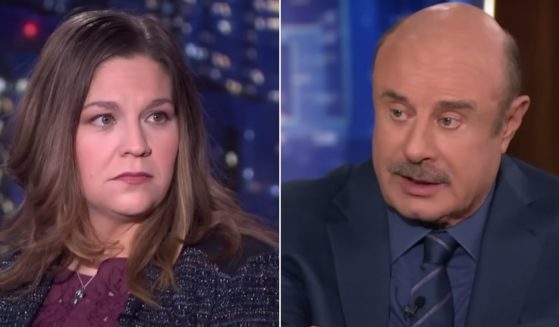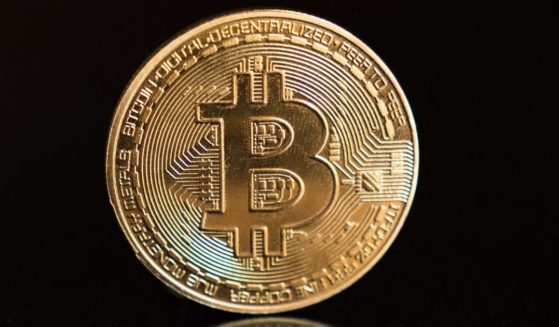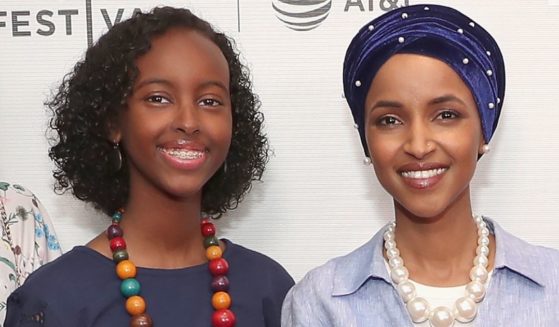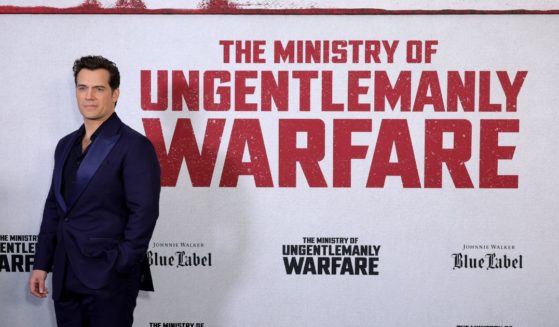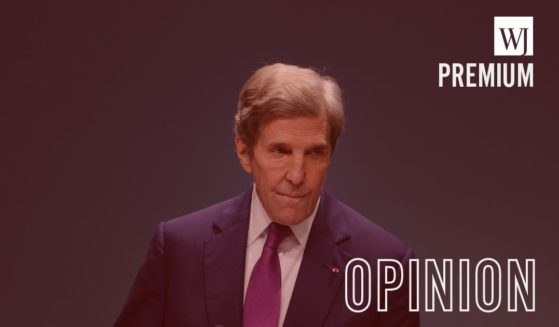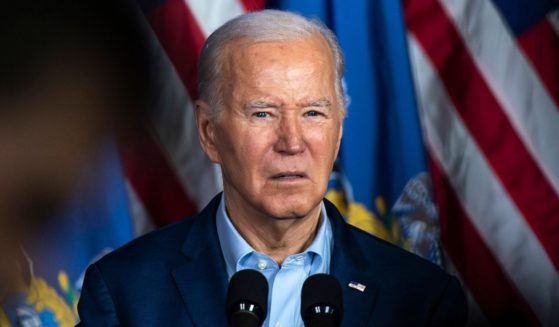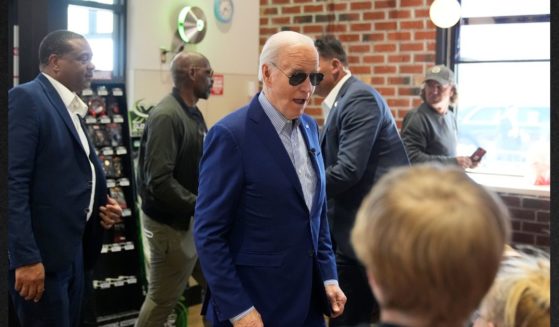If All These Regulations Have To Be Suspended To Treat COVID, Why Do We Have Them in the First Place?
If there’s one takeaway from the coronavirus outbreak, it’s that government regulation can be — and usually is — the enemy.
If you need evidence for this, you need look no further than the White House’s fact sheet on how the Trump administration is fighting COVID-19. One of the ways that pops up frequently: Getting the government out of the way.
On Friday — the same day that President Trump declared a national emergency — the White House released the document about its efforts to fight the virus, titled “President Donald J. Trump Has Mobilized the Full Resources of the Federal Government to Respond to the Coronavirus.”
That’s an interesting title. It’s not necessarily wrong; the administration has acted to allow “States, territories, and tribes to access over $42 billion in existing funding to combat the coronavirus.” There’s also $7 billion in loans being made available from the Small Business Administration to businesses affected by the virus.
However, a curiously significant chunk of the fact sheet involved slashing government regulations.
In a section of the document titled “Empowering Healthcare Providers,” for instance, the White House states “[t]he President’s emergency declaration will give healthcare providers on the front lines of this pandemic the flexibility they need to respond.”
That flexibility comes, mostly, by getting the government out of the way.
“President Trump continues to cut through every piece of unnecessary red tape that may hinder our response efforts and make every Federal resource available,” the document states.
“The President will empower the Secretary of Health and Human Services (HHS) to waive provisions of certain laws and regulations and give maximum flexibility to healthcare providers to care for their patients.”
What does this include? According to HealthLeaders Media, immediate changes include the waiving of “restrictions on telehealth usage, the requirement that critical access hospitals have a 25-available-bed limit for patients, and a maximum length of stay of 96 hours for inpatients.
“Additionally, nursing homes will be able to waive the requirement that patients have a three-day hospital stay prior to admittance; and hospitals will have restrictions lifted for hiring new physicians, obtaining available office space, and caring for patients within the facility itself in order to ‘ensure that the emergency care can be quickly established.'”
And then there’s the ability for potentially infected people to get tested.
“The Administration is working with the private sector to open up drive-through testing collection sites in critical areas impacted by the coronavirus,” the fact sheet stated.
“The Administration is working with Google to develop a website Americans can go to determine whether a test is needed and, if so, facilitate testing at a nearby location.”
The government getting out of the way is a good thing when you consider how much it’s already dropped the ball. It’s not exactly the administration — although President Donald Trump and his top officers still could have gotten government out of the way earlier, mind you — but the bureaucracy around it.
Consider the Centers for Disease Control’s test, which could give false positives if a patient was infected with another virus. Instead, the government was forced to turn to the private sector. In a Twitter video, Texas GOP Rep. Dan Crenshaw explained the problem with the original test and how loosening regulations was part of the solution:
Scoring cheap political points is easy, but also dishonest. In the US, our tests for coronavirus have been delayed and difficult to get. We recently addressed the problem by loosening regulations.
But why’d it take so long? Who is really to blame?
WATCH pic.twitter.com/rYjhWNe6PG
— Rep. Dan Crenshaw (@RepDanCrenshaw) March 13, 2020
“It’s our regulatory process,” Crenshaw said. “That’s what stopped us from getting a test out to people.”
After the failure of the CDC’s test, he noted, there was one possible reaction: “All right, now we have to take advantage of our pretty great private industry in America and actually allow them to start using their test.
“It only took them a few days, and it only took them a few days to get it up to millions of tests,” he said. “That’s the situation we’re in now. They loosened those restrictions and our private industry has stepped up to the plate.”
It’s not just that. A report in last week’s New York Times describes the problems infectious disease expert Dr. Helen Y. Chu faced when she tried to start coronavirus testing in Seattle. When cases were first confirmed in January, Chu had the ability to test for the disease. And the government had the ability to stop her.
“As luck would have it, Dr. Chu had a way to monitor the region. For months, as part of a research project into the flu, she and a team of researchers had been collecting nasal swabs from residents experiencing symptoms throughout the Puget Sound region,” The Times reported Tuesday.
“To repurpose the tests for monitoring the coronavirus, they would need the support of state and federal officials. But nearly everywhere Dr. Chu turned, officials repeatedly rejected the idea, interviews and emails show, even as weeks crawled by and outbreaks emerged in countries outside of China, where the infection began.”
The CDC told Chu she neeed approval from the Food and Drug Administration, or use the CDC’s test — which, of course, was completely busted. And FDA approval was not going to be possible any time soon, according to The Times.
“But the F.D.A. could not offer the approval because the lab was not certified as a clinical laboratory under regulations established by the Centers for Medicare & Medicaid Services, a process that could take months,” The Times reported.
Chu’s team finally began testing on its own without government approval, according to The Times, and found that a teenager without a recent travel history had contracted COVID-19 — proof that the virus wasn’t contained. The teen, it’s worth noting, was informed of the positive test just as he was about to enter his school. Granted, he had recovered, but the school was closed as a precaution.
“It must have been here this entire time,” Chu told The Times.
And what did the CDC and Food and Drug Administration say? They called her later in the day, and it wasn’t to congratulate her.
“What they said on that phone call very clearly was cease and desist to Helen Chu,” epidemiologist Dr. Scott Lindquist told The Times. “Stop testing.”
The very next day, according to The Times report, Chu and her team go limited permission to proceed.
“On a phone call the day after the C.D.C. and F.D.A. had told Dr. Chu to stop, officials relented, but only partially, the researchers recalled. They would allow the study’s laboratories to test cases and report the results only in future samples. They would need to use a new consent form that explicitly mentioned that results of the coronavirus tests might be shared with the local health department,” The Times reported.
“They were not to test the thousands of samples that had already been collected.”
The question asks itself: If suspending these regulations and getting bureaucratic organs like the CDC and FDA out of the way is so meliorative, why do we need that interference in the first place?
“[T]he Seattle Flu Study illustrates how existing regulations and red tape — sometimes designed to protect privacy and health — have impeded the rapid rollout of testing nationally, while other countries ramped up much earlier and faster,” The Times reported. “Faced with a public health emergency on a scale potentially not seen in a century, the United States has not responded nimbly.”
No, it hasn’t — and it’s clear these regulations have impeded our ability to deal with the coronavirus.
The power of government can be used in positive ways when dealing with a crisis like COVID-19. It’s clear we’re in a war of containment at the moment.
However, part of that war is against red tape enacted by bureaucrats who couldn’t comprehend the problems they would cause. When that’s the case, it’s time to stop mindlessly regulating.
Truth and Accuracy
We are committed to truth and accuracy in all of our journalism. Read our editorial standards.


